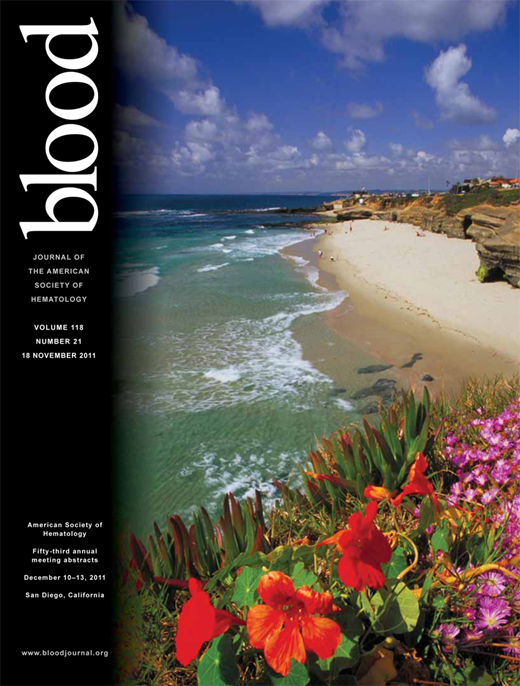Abstract
Abstract 3230
Acute myeloid leukemia (AML) is heterogeneous clonal disorder, marked by the accumulation of undifferentiated myeloid blasts. Emerging data suggest that angiogenesis plays an important role in AML, and angiogenic mediators that promote the growth of leukemic blasts in an auto/paracrine manner may be promising targets for novel therapeutic strategies. Like angiogenesis, lymphangiogenesis is also involved in tumor cell dissemination and metastasis. In particular, targeting of VEGFR-3, a lymphatic marker, has been successful in treating tumors. Although lymphatic factors can directly affect tumor growth and metastasis, and most immune cells, including NK cells, are generated from lymphatic organs, the relationship between lymphatic mediator/receptor and hematopoietic malignancies has not yet been investigated. Among the possibilities, we point out that NK cells, which have a killing function, can remove susceptible cancer cells.
The AML patients examined were of diverse subtypes, including M0 (n = 1), M1 (n = 5), M2 (n = 4), M3 (n = 3), M4 (n = 7), and M5 (n = 4). In total, 24 de novo adult AML patients and nine normal donors participated. We investigated whether marker genes and proteins for lymphatic endothelial cells (LECs), such as LYVE-1, VEGFR-3, Prox1, and podoplanin, were expressed on peripheral blood mononuclear cell (PBMCs) in AML patients using quantitative RT-PCR (RQ-PCR), immunocytochemistry, and FACS. Additionally, isolated CD56+ VEGFR-3+ and CD56+ VEGFR-3− cells from PB in AML patients were subjected to RQ-PCR to investigate cytotoxicity-related genes. Our data showed that all the LEC markers were highly expressed in PBMCs from AML patients compared with normal donors (by RQ-PCR, LYVE-1, 3.6 fold; VEGFR-3, 8.4 fold; Prox1, 55.1 fold; podoplanin, 5.2 fold; by FACS, AML vs. normal, LYVE-1: 9.0 ± 7.1% vs. 6.5 ± 2.8%, VEGFR-3: 21.4 ± 0.1% vs. 0.5 ± 0.2%, podoplanin: 1.1 ± 0.3% vs. 0.5 ± 0.1%). RQ-PCR analysis further revealed that the CD56+ VEGFR-3+ cells exhibited high levels of VEGFR-3 but not the cytolytic mediators perforin or granzyme B, indicating that CD56+ cell activity is closely associated with the lymphatic factor VEGFR-3. These data led us to question whether VEGFR-3-expressing CD56+ cells can attenuate cytotoxic function in NK cells from AML PB. To address this, we performed cytotoxicity assays with K562 using magnetic-activated-cell-sorted CD56+ cells that were exposed to LEC cells for 1 day. LEC-exposed CD56+ cells showed significantly lower lytic function than did fresh CD56+ cells, and VEGFR-3-expressing CD56+ cells in AML PB also displayed a low level of cytotoxic inflammatory factors and lytic function, suggesting that the lymphatic factor VEGFR-3 can reduce CD56+ cell activity.
Our results are the first demonstration that VEGFR-3+ cells are highly enriched in CD56+ cells and are present in the PB of AML patients, suggesting a possible role for the lymphatic protein VEGFR-3 and function of NK cells in the pathophysiology of AML disease. This finding may represent important link for investigating lymphatic cells and NK function in AML.
No relevant conflicts of interest to declare.
Author notes
Asterisk with author names denotes non-ASH members.

